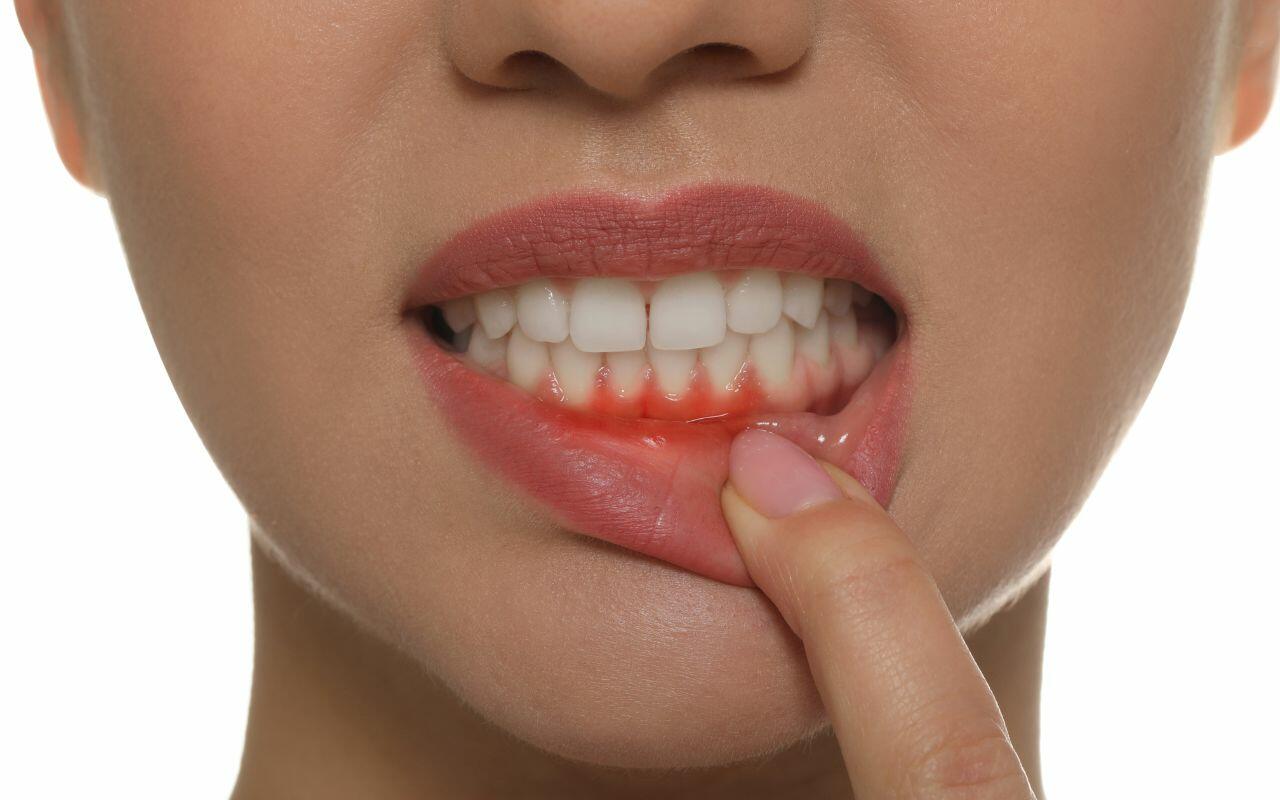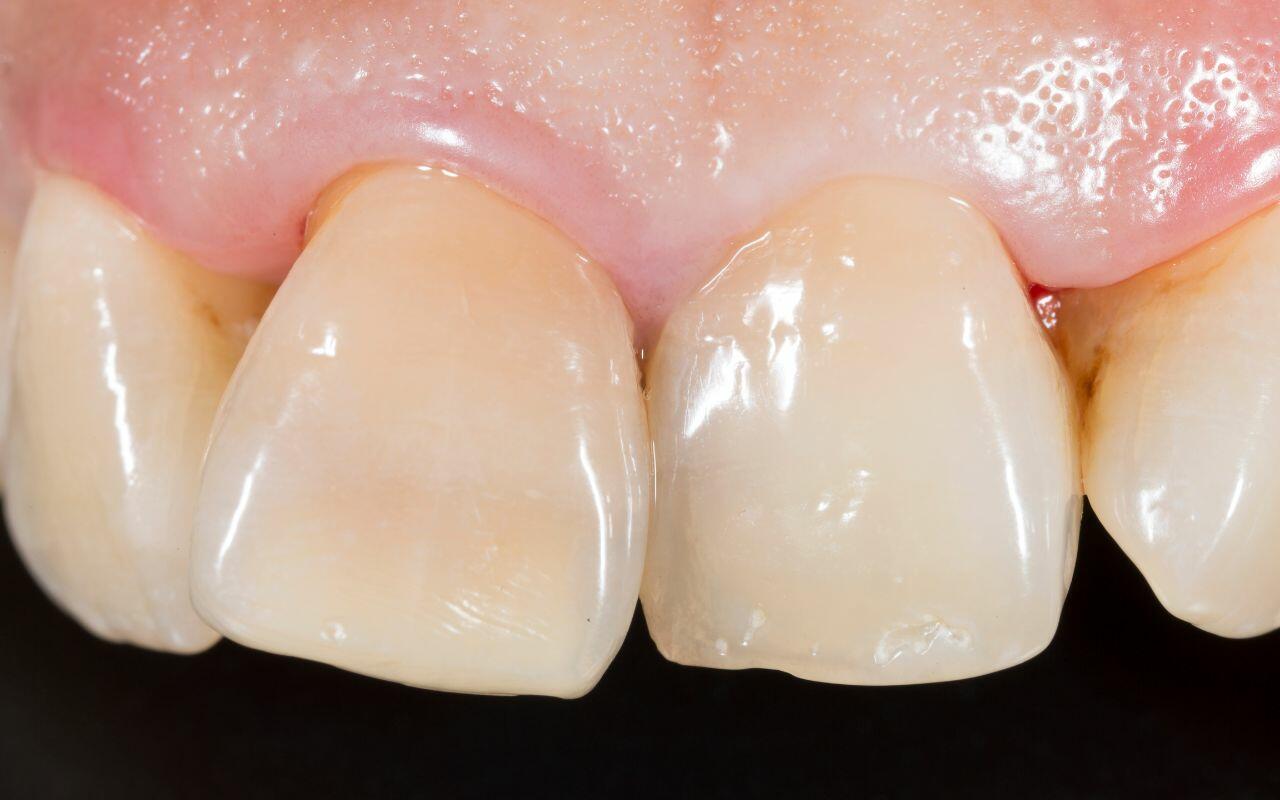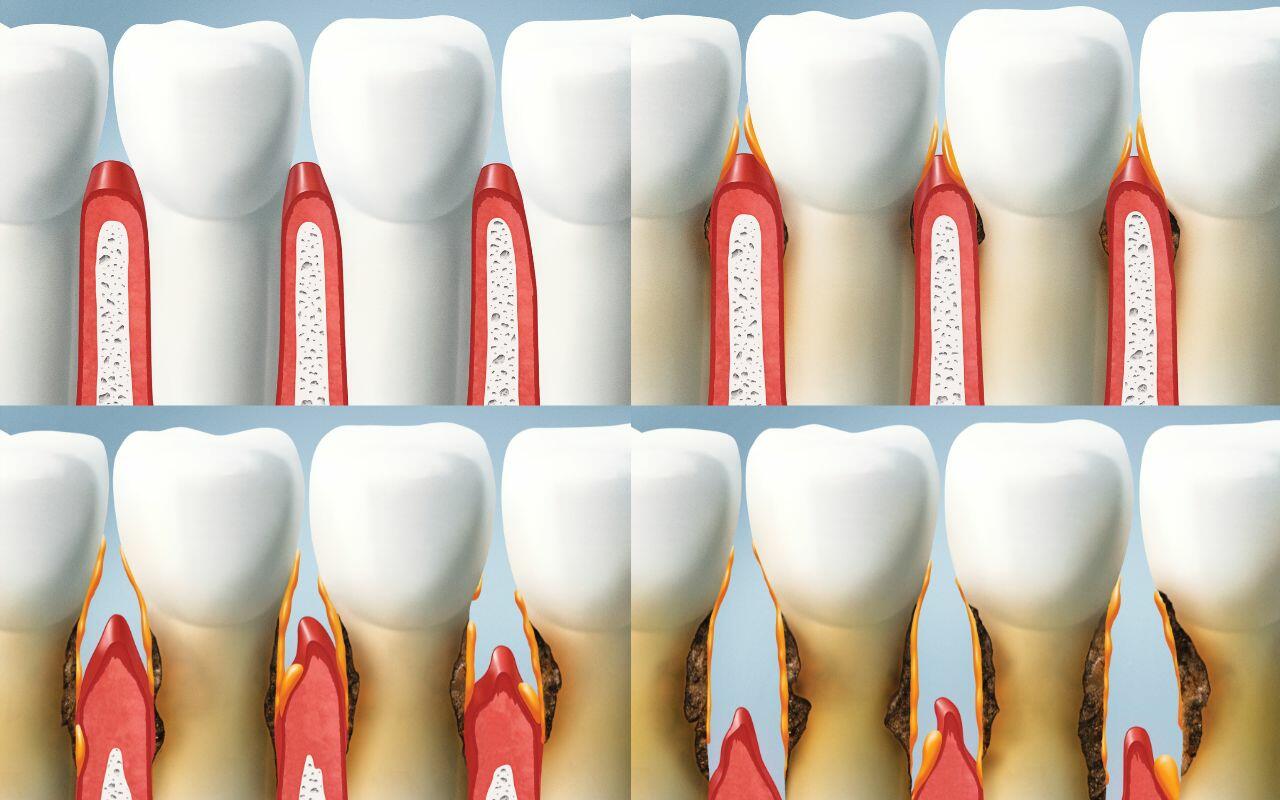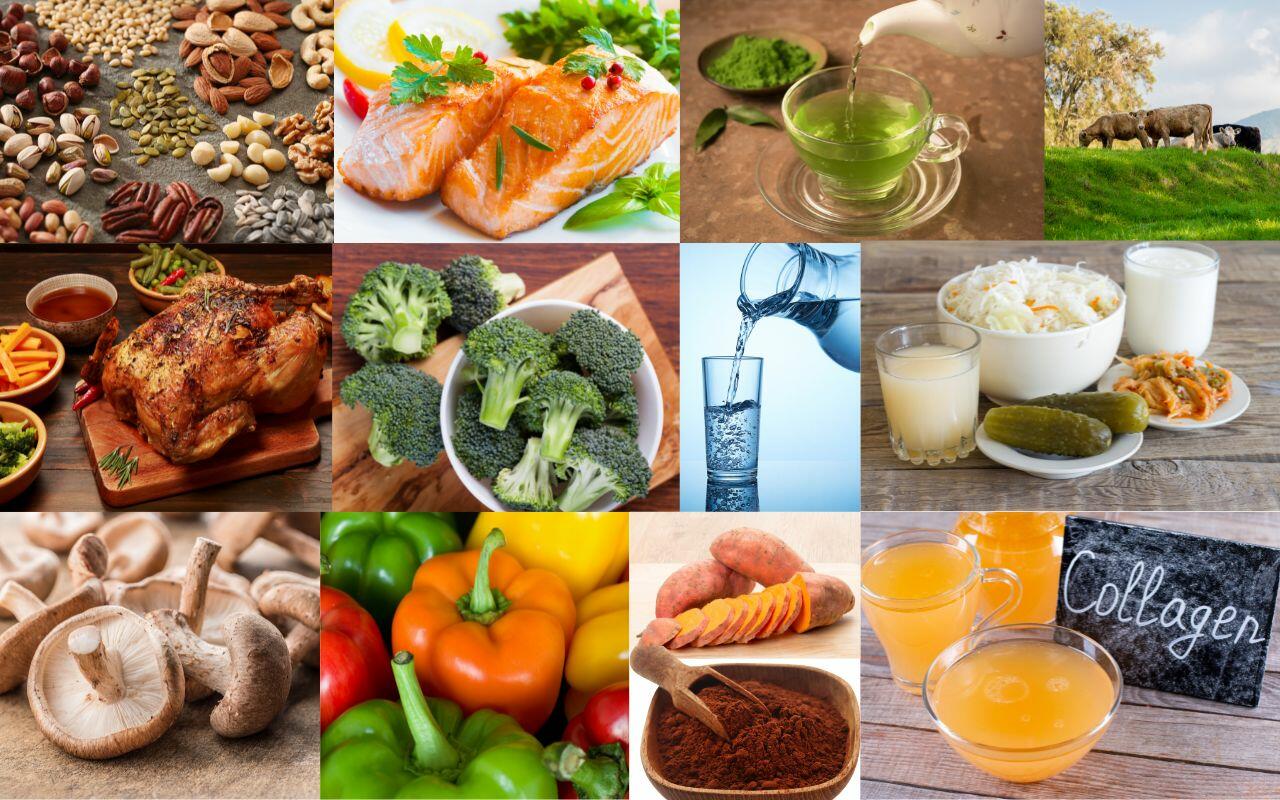February is Gum Disease Awareness Month, and although we stress healthy oral health regimes all year round, this is a good time to remind people why. Gum disease or “gingivitis” is an entirely preventable dental issue, yet seven out of 10 Canadians develop gum disease at some point. Although a strong oral health regime is key to gum health, what you put in your mouth is just as important. Here we explain how to eat for healthy gums.
What Does Gum Disease Look Like?
Signs of gum disease include:
Early Signs:

- Red, tender, swollen gums
- Bleeding when you brush or floss
Progressive Signs:

- Gums pulling away from your teeth
- Loose teeth
- Changes in the feel of your bite when chewing or at rest
- Pus
- Pain
- Tooth sensitivity
- Always having bad breath even after brushing or using mouthwash
At the first signs of gum disease, it is important to see your dentist. Gingivitis is completely reversible in the early stages.
What Happens If Gum Disease Is Allowed To Progress Without Treatment?

Gum disease is progressive with four distinct stages. Here is what you can expect if you don’t seek treatment at the first stage:
Stages 2 and 3
At the second and third stages of gum disease or periodontitis you’ll see more bleeding, worsening bad breath, and deep pockets forming around your teeth. This stage increases the risk of infection getting into your bloodstream, straining your immune system. Improved oral hygiene habits won’t help anymore at this stage as the infection has set in. You will require scaling and root planing treatment to remove the infected tissue, tartar, plaque, and bacteria.
Stage 4
If you do not receive scaling and root planing treatment, the infection becomes worse, damaging your gum tissue further and reaching your jawbone. The infection in the bloodstream makes you more vulnerable to illness, and you’ll have pus oozing from your gums, contributing to bad breath and an awful taste in your mouth. Loosening teeth due to severely receding gums and deepening pockets put you at risk of tooth loss. The only way to treat the gums at this stage is surgery or laser therapy in hand with medication to fight the infection travelling through your body.
How To Prevent Gum Disease

Gum disease is completely preventable. All you have to do is:
- Brush your teeth twice daily
- Floss every day
- See your dentist twice a year
- Eat a balanced diet
This is important for both adults and children, as gum disease happens to kids too.
How To Eat For Healthy Gums
Nutrition for healthy gums includes foods you should and shouldn’t eat:
Foods To Eat For Healthy Gums

- Nuts and seeds: Nuts and seeds high in Omega-3s, such as macadamias, pistachios, and sesame seeds, act as anti-inflammatories to help prevent gum disease.
- Fatty fish: Another excellent source of Omega-3s, fatty fish such as salmon, herring, and mackerel are not just great anti-inflammatories but are also good for the immune system.
- Grass-fed beef: Although many people are cutting out beef from their diets, if you choose grass-fed beef, you increase your collagen intake while getting another boost of Omega-3s.
- Chicken: Chicken also contains collagen but with the added benefits of CoQ10. This might sound familiar as it is often mentioned in skincare product ads promoting its ability to improve cell function. As a result, it is also effective in reducing periodontal pockets and speeding up healing following periodontal treatments.
- Bone broth: Broth is not just good for your gums but is also a foodie craze. This is a great collagen booster with a lot of nutrients, making it one of the latest superfoods.
- Shiitake mushrooms: The lentinan found in mushrooms fights the bad bacteria that cause gum disease without impacting the good bacteria that help prevent gum disease. The mushrooms are also anti-inflammatory.
- Broccoli: The Vitamin C in broccoli works like an antioxidant, along with a long list of additional nutrients that all assist with gum and overall health, including Vitamin B1, magnesium, iron, calcium, niacin, and selenium.
- Bell peppers: Also high in Vitamin C, eating red and green bell peppers help fight gum disease.
- Sweet potatoes: Packed with beta carotene, sweet potatoes reduce inflammation and provide a healthy dose of Vitamin A, C, and B6, along with Manganese.
- Green tea: The catechins in green tea help inhibit bacteria and reduce inflammation.
- Cacao: This is an unexpected and very welcome item on our list, although it doesn’t mean you can eat a milk chocolate bar a day! You need to focus on less sweet, darker chocolates of at least 70% as they contain disease-fighting catechins and CBH, which helps harden your tooth enamel.
- Pickled and probiotic foods: Pickled and fermented foods such as sauerkraut and kimchi, as well as probiotic foods like yogurt, support the production of good bacteria. Pickled foods also help suppress harmful oral pathogens.
- Water: Make water your drink of choice whenever possible to help rinse away harmful bacteria and food debris.
Foods To Avoid For Healthy Gums

- Acidic foods & drinks: Acidic foods and drinks such as sweet fizzy drinks and citrus erode your tooth enamel and also cause gum irritation that can lead to gum recession.
- Sweets: Sugar contributes to the production of harmful oral bacteria and in turn can cause gum irritation and recession. Avoid all sugary, sweet foods, including natural treats like dried fruits that stick to teeth.
- Starchy foods: Oh boy, looks like we’re listing all of most people’s favourite foods. Unfortunately, carbs and starchy foods contribute to harmful oral bacteria growth to increase plaque buildup and irritate gums.
Why Is Nutrition For Healthy Gums Important?

Nutrition contributes to your overall health. Since food enters through your mouth, your teeth and gums are the first points that come into contact with the food and drinks you choose. When you make the right choices, you reduce the risk of bacteria and plaque, so your teeth remain healthier. In turn, so do your gums. Avoiding sweets includes all forms of sugar, so read ingredient lists carefully to look for things such as honey, molasses, liquid invert sugar, glucose, and fructose. If you want a sweet treat, avoid stickier foods like taffy, and be sure to drink water to dilute the sugars and wash away residue.
Choosing the right foods will help keep your family’s gums nice and healthy.
If you feel you are at risk for gum disease or are already showing symptoms, call us right away at 905-775-5307 or click here to request an appointment.
